My
List |
Addition Date
|
Target
|
Mission
|
Instrument
|
Size
|

|
2010-02-17 |
C/2007 Q3 (Siding Spring)
|
Wide-field Infrared Survey Explorer (WISE)
|
WISE Telescope
|
1281x717x3 |
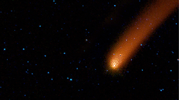
|
-
PIA12836:
-
Ablaze with Infrared Light

Full Resolution:
TIFF
(2.759 MB)
JPEG
(39.57 kB)
|

|
2010-02-17 |
C/2007 Q3 (Siding Spring)
|
Wide-field Infrared Survey Explorer (WISE)
|
WISE Telescope
|
1312x1555x3 |

|
-
PIA12830:
-
Visitor from Deep Space
Full Resolution:
TIFF
(6.127 MB)
JPEG
(105.7 kB)
|

|
2010-02-11 |
P/2010 B2 (WISE)
|
Wide-field Infrared Survey Explorer (WISE)
|
WISE Telescope
|
681x681x3 |
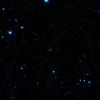
|
-
PIA12449:
-
First Comet Seen by WISE
Full Resolution:
TIFF
(1.393 MB)
JPEG
(33.48 kB)
|

|
2010-01-23 |
2010 AB78
|
Wide-field Infrared Survey Explorer (WISE)
|
WISE Telescope
|
1464x1464x3 |
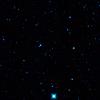
|
-
PIA12499:
-
First of Many Asteroid Finds
Full Resolution:
TIFF
(6.442 MB)
JPEG
(146.4 kB)
|

|
2010-03-26 |
C/2008 Q3 (Garradd)
|
Wide-field Infrared Survey Explorer (WISE)
|
WISE Telescope
|
2349x1000x3 |
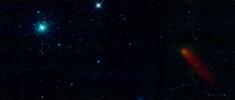
|
-
PIA12985:
-
M3 & Comet Garradd
Full Resolution:
TIFF
(7.055 MB)
JPEG
(198.7 kB)
|

|
2010-05-25 |
Asteroid
|
Wide-field Infrared Survey Explorer (WISE)
|
WISE Telescope
|
640x359x3 |
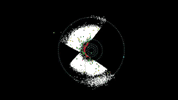
|
-
PIA13113:
-
Scanning for Asteroids and Comets

Full Resolution:
TIFF
(690.2 kB)
JPEG
(16.57 kB)
|

|
2010-10-04 |
Asteroid
|
Wide-field Infrared Survey Explorer (WISE)
|
WISE Telescope
|
568x561x3 |
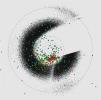
|
-
PIA13435:
-
Asteroid and Comet Census from WISE
Full Resolution:
TIFF
(957.3 kB)
JPEG
(61.23 kB)
|

|
2010-10-05 |
Comet
|
Wide-field Infrared Survey Explorer (WISE)
|
WISE Telescope
|
2148x1331x3 |
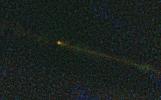
|
-
PIA13438:
-
Icy Visitor from Beyond
Full Resolution:
TIFF
(8.588 MB)
JPEG
(446.5 kB)
|

|
2011-02-01 |
Comet
|
Wide-field Infrared Survey Explorer (WISE)
|
WISE Telescope
|
3754x3004x3 |
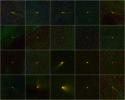
|
-
PIA13457:
-
Comets WISE -- A Family Portrait
Full Resolution:
TIFF
(33.83 MB)
JPEG
(1.278 MB)
|

|
2011-09-29 |
Vesta
|
Wide-field Infrared Survey Explorer (WISE)
|
WISE Telescope
|
3450x2400x3 |
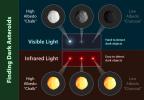
|
-
PIA14732:
-
Infrared Telescopes Spy Small, Dark Asteroids
Full Resolution:
TIFF
(24.84 MB)
JPEG
(457.8 kB)
|

|
2011-09-29 |
Vesta
|
Wide-field Infrared Survey Explorer (WISE)
|
WISE Telescope
|
3450x2400x3 |
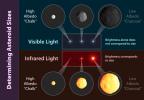
|
-
PIA14733:
-
How to Tell the Size of An Asteroid
Full Resolution:
TIFF
(24.84 MB)
JPEG
(463.2 kB)
|

|
2011-09-29 |
Vesta
|
Wide-field Infrared Survey Explorer (WISE)
|
WISE Telescope
|
3300x2550x3 |
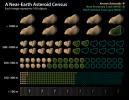
|
-
PIA14734:
-
WISE Revises Numbers of Asteroids Near Earth
Full Resolution:
TIFF
(25.25 MB)
JPEG
(848.6 kB)
|

|
2011-09-29 |
Vesta
|
Wide-field Infrared Survey Explorer (WISE)
|
WISE Telescope
|
1281x720x3 |
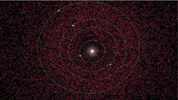
|
-
PIA14735:
-
Changing Views of Our Solar System

Full Resolution:
TIFF
(2.77 MB)
JPEG
(233.1 kB)
|

|
2011-09-29 |
Vesta
|
Wide-field Infrared Survey Explorer (WISE)
|
WISE Telescope
|
1279x716x1 |
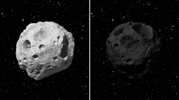
|
-
PIA14736:
-
Portrait of Two Asteroids in Different Light

Full Resolution:
TIFF
(917 kB)
JPEG
(78.71 kB)
|

|
2013-08-21 |
Asteroid
|
Wide-field Infrared Survey Explorer (WISE)
|
WISE Telescope
|
1600x1600x3 |
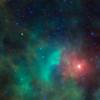
|
-
PIA17255:
-
Asteroid Zips By Orion
Full Resolution:
TIFF
(7.683 MB)
JPEG
(163.5 kB)
|

|
2005-02-03 |
Saturn
|
W. M. Keck Observatory
|
Infrared Radiometer
|
433x246x3 |
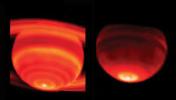
|
-
PIA07007:
-
Red-Hot Saturn
Full Resolution:
TIFF
(194.3 kB)
JPEG
(8.161 kB)
|

|
2005-02-03 |
Saturn
|
W. M. Keck Observatory
|
Infrared Radiometer
|
631x351x3 |
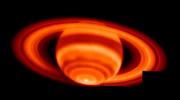
|
-
PIA07008:
-
Saturn's Hot Spot
Full Resolution:
TIFF
(329.2 kB)
JPEG
(15.56 kB)
|

|
1996-01-29 |
Jupiter
|
Voyager
|
|
2000x536x3 |

|
-
PIA00011:
Cylindrical Projection of Jupiter
Full Resolution:
TIFF
(2.37 MB)
JPEG
(95.49 kB)
|

|
1996-08-29 |
Earth
|
Voyager
|
|
565x790x3 |

|
-
PIA00013:
-
Crescent Earth and Moon
Full Resolution:
TIFF
(49.07 kB)
JPEG
(9.171 kB)
|

|
1996-02-01 |
Jupiter
|
Voyager
|
VG ISS - Narrow Angle
|
895x848x3 |
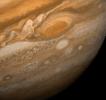
|
-
PIA00014:
-
Jupiter Great Red Spot
Full Resolution:
TIFF
(1.502 MB)
JPEG
(56.12 kB)
|

|
1996-01-29 |
Jupiter
|
Voyager
|
VG Imaging Science Subsystem
|
940x886x3 |
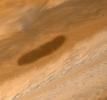
|
-
PIA00015:
-
Large Brown Oval
Full Resolution:
TIFF
(1.991 MB)
JPEG
(54.79 kB)
|

|
1996-01-29 |
Jupiter
|
Voyager
|
|
760x876x3 |

|
-
PIA00017:
-
Cloud Layers Southeast of the Great Red Spot
Full Resolution:
TIFF
(1.838 MB)
JPEG
(53.42 kB)
|

|
1996-01-29 |
Jupiter
|
Voyager
|
Imaging Science Subsystem
|
896x928x3 |

|
-
PIA00018:
-
Exaggerated Color View of the Great Red Spot
Full Resolution:
TIFF
(1.933 MB)
JPEG
(135.2 kB)
|

|
1996-01-29 |
Jupiter
|
Voyager
|
|
908x880x3 |
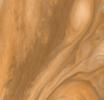
|
-
PIA00019:
-
Cloud Layers East of the Great Red Spot
Full Resolution:
TIFF
(1.709 MB)
JPEG
(63.41 kB)
|

|
1996-01-29 |
Jupiter
|
Voyager
|
|
908x880x3 |
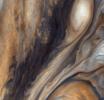
|
-
PIA00020:
-
Exaggerated Color East of the Great Red Spot
Full Resolution:
TIFF
(1.728 MB)
JPEG
(125 kB)
|

|
1996-08-01 |
Jupiter
|
Voyager
|
|
2798x2030x3 |
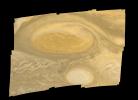
|
-
PIA00022:
-
Jupiter Great Red Spot Mosaic
Full Resolution:
TIFF
(10.08 MB)
JPEG
(324 kB)
|

|
1996-01-29 |
Saturn
|
Voyager
|
|
971x855x3 |
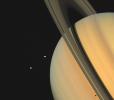
|
-
PIA00024:
-
Saturn With Tethys and Dione
Full Resolution:
TIFF
(1.595 MB)
JPEG
(42.22 kB)
|

|
1996-01-29 |
Saturn
|
Voyager
|
|
400x300x3 |
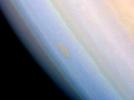
|
-
PIA00025:
-
Saturn - False Color of Southern Hemisphere
Full Resolution:
TIFF
(223.9 kB)
JPEG
(9.037 kB)
|

|
1996-01-29 |
Saturn
|
Voyager
|
|
770x910x3 |

|
-
PIA00026:
-
Saturn - Brown Ovals in Northern Hemisphere
Full Resolution:
TIFF
(1.62 MB)
JPEG
(105.3 kB)
|

|
1999-08-30 |
Saturn
|
Voyager
|
|
652x461x3 |
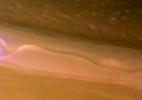
|
-
PIA00027:
-
Saturn -- Ribbon-like Wave Structure in Atmosphere
Full Resolution:
TIFF
(691.5 kB)
JPEG
(45.73 kB)
|

|
1996-09-26 |
Jupiter
|
Voyager
|
Imaging Science Subsystem
|
400x400x3 |
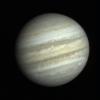
|
-
PIA00029:
-
First Close-up Image of Jupiter from Voyager 1
Full Resolution:
TIFF
(280.8 kB)
JPEG
(10.37 kB)
|

|
1996-01-29 |
Saturn
|
Voyager
|
VG Imaging Science Subsystem
|
1000x1000x3 |

|
-
PIA00030:
-
Saturn With Rhea and Dione (True Color)
Full Resolution:
TIFF
(1.305 MB)
JPEG
(35.65 kB)
|

|
1996-08-01 |
Uranus
|
Voyager
|
VG ISS - Narrow Angle
|
2000x1000x3 |
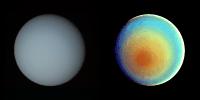
|
-
PIA00032:
-
Uranus in True and False Color
Full Resolution:
TIFF
(2.847 MB)
JPEG
(99.59 kB)
|

|
1996-01-29 |
Neptune
|
Voyager
|
VG ISS - Narrow Angle
|
400x970x1 |

|
-
PIA00045:
-
Neptune - Changes in Great Dark Spot
Full Resolution:
TIFF
(270.4 kB)
JPEG
(40.38 kB)
|

|
1996-01-29 |
Neptune
|
Voyager
|
VG ISS - Narrow Angle
|
1000x1000x3 |
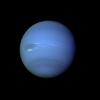
|
-
PIA00046:
-
Neptune Full Disk
Full Resolution:
TIFF
(814.1 kB)
JPEG
(32.49 kB)
|

|
1996-01-29 |
Neptune
|
Voyager
|
|
430x465x1 |

|
-
PIA00047:
-
Neptune - Changes in Great Dark Spot
Full Resolution:
TIFF
(111.3 kB)
JPEG
(25.64 kB)
|

|
1996-01-29 |
Neptune
|
Voyager
|
VG ISS - Narrow Angle
|
1200x1297x3 |

|
-
PIA00048:
-
Neptune - Great Dark Spot and Scooter
Full Resolution:
TIFF
(1.924 MB)
JPEG
(55.04 kB)
|

|
1998-01-08 |
Neptune
|
Voyager
|
VG ISS - Narrow Angle
|
1000x1000x3 |
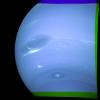
|
-
PIA00049:
-
Neptune - Great Dark Spot, Scooter, Dark Spot 2
Full Resolution:
TIFF
(1.461 MB)
JPEG
(55.96 kB)
|

|
1996-01-29 |
Neptune
|
Voyager
|
VG ISS - Narrow Angle
|
884x698x3 |
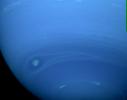
|
-
PIA00050:
-
Neptune's Southern Hemisphere
Full Resolution:
TIFF
(931.2 kB)
JPEG
(35.2 kB)
|

|
1996-01-29 |
Neptune
|
Voyager
|
VG ISS - Wide Angle
|
650x650x3 |
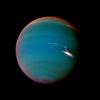
|
-
PIA00051:
-
Neptune in False Color
Full Resolution:
TIFF
(352 kB)
JPEG
(20.01 kB)
|

|
1999-08-30 |
Neptune
|
Voyager
|
VG ISS - Narrow Angle
|
700x852x3 |

|
-
PIA00052:
-
Neptune Great Dark Spot in High Resolution
Full Resolution:
TIFF
(978.8 kB)
JPEG
(73.88 kB)
|

|
1996-01-29 |
Neptune
|
Voyager
|
|
330x330x1 |
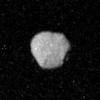
|
-
PIA00055:
-
1989N1
Full Resolution:
TIFF
(59.33 kB)
JPEG
(10.79 kB)
|

|
1996-01-29 |
Neptune
|
Voyager
|
|
780x780x3 |
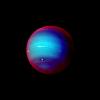
|
-
PIA00057:
-
Neptune False Color Image of Haze
Full Resolution:
TIFF
(267.8 kB)
JPEG
(25.29 kB)
|

|
1996-01-29 |
Neptune
|
Voyager
|
|
682x596x3 |
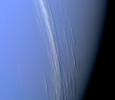
|
-
PIA00058:
-
Neptune Clouds Showing Vertical Relief
Full Resolution:
TIFF
(892.5 kB)
JPEG
(22.54 kB)
|

|
1996-01-29 |
Neptune
|
Voyager
|
|
600x800x1 |

|
-
PIA00062:
-
1989N1 Surface Detail
Full Resolution:
TIFF
(70.54 kB)
JPEG
(12.6 kB)
|

|
1996-01-29 |
Neptune
|
Voyager
|
VG ISS - Wide Angle
|
844x732x3 |
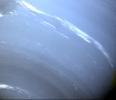
|
-
PIA00063:
-
Neptune - True Color of Clouds
Full Resolution:
TIFF
(1.472 MB)
JPEG
(56.9 kB)
|

|
1996-01-29 |
Neptune
|
Voyager
|
VG ISS - Narrow Angle
|
934x722x1 |

|
-
PIA00064:
-
Neptune's Dark Spot (D2) at High Resolution
Full Resolution:
TIFF
(499.8 kB)
JPEG
(135.7 kB)
|

|
1996-09-26 |
Jupiter
|
Voyager
|
|
1471x1238x3 |
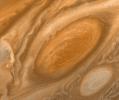
|
-
PIA00065:
-
Jupiter's Great Red Spot Region
Full Resolution:
TIFF
(3.892 MB)
JPEG
(115.8 kB)
|

|
1996-01-29 |
Uranus
|
Voyager
|
VG ISS - Wide Angle
|
794x960x3 |

|
-
PIA00143:
-
Uranus - Final Image
Full Resolution:
TIFF
(788.1 kB)
JPEG
(21.25 kB)
|

|
1996-01-29 |
Jupiter
|
Voyager
|
VG ISS - Narrow Angle
|
820x540x3 |
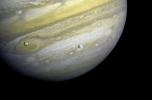
|
-
PIA00144:
-
Jupiter with Satellites Io and Europa
Full Resolution:
TIFF
(821.7 kB)
JPEG
(31.32 kB)
|

|
1997-01-09 |
Jupiter
|
Voyager
|
VG ISS - Wide Angle
|
800x800x1 |
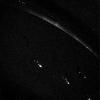
|
-
PIA00204:
-
Lights In The Night
Full Resolution:
TIFF
(153.9 kB)
JPEG
(164.8 kB)
|

|
1996-03-13 |
Jupiter
|
Voyager
|
VG ISS - Narrow Angle
|
1000x1000x3 |
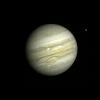
|
-
PIA00235:
-
Jupiter with Satellite Io
Full Resolution:
TIFF
(1.226 MB)
JPEG
(37.26 kB)
|

|
1999-06-19 |
Saturn
|
Voyager
|
|
800x550x3 |

|
-
PIA00335:
-
Full-disk Color Image of Crescent Saturn with Rings and Ring Shadows
Full Resolution:
TIFF
(532.9 kB)
JPEG
(26 kB)
|

|
1998-06-04 |
Jupiter
|
Voyager
|
|
840x840x3 |
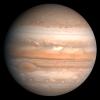
|
-
PIA00343:
-
Jupiter
Full Resolution:
TIFF
(1.194 MB)
JPEG
(42 kB)
|

|
1998-06-04 |
Uranus
|
Voyager
|
|
540x800x3 |

|
-
PIA00346:
-
Color Voyager 2 Image Showing Crescent Uranus
Full Resolution:
TIFF
(231.9 kB)
JPEG
(17.76 kB)
|

|
1998-06-04 |
Saturn
|
Voyager
|
|
860x1230x3 |

|
-
PIA00349:
-
Saturn and 4 Icy Moons, Enhanced Color
Full Resolution:
TIFF
(1.15 MB)
JPEG
(48.46 kB)
|

|
1999-03-06 |
Jupiter
|
Voyager
|
VG ISS - Narrow Angle
|
1000x1000x3 |
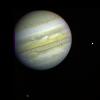
|
-
PIA00358:
-
Jupiter and Three Galilean Satellites
Full Resolution:
TIFF
(1.514 MB)
JPEG
(50.61 kB)
|

|
1999-03-06 |
Jupiter
|
Voyager
|
VG ISS - Narrow Angle
|
916x783x3 |
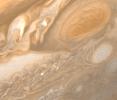
|
-
PIA00359:
-
Jupiter Great Red Spot and White Ovals
Full Resolution:
TIFF
(1.78 MB)
JPEG
(66.58 kB)
|

|
1999-03-06 |
Jupiter
|
Voyager
|
VG ISS - Narrow Angle
|
915x894x3 |
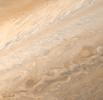
|
-
PIA00360:
-
High Winds in the Jovian Mid-latitudes
Full Resolution:
TIFF
(1.887 MB)
JPEG
(76.32 kB)
|

|
1996-10-23 |
Uranus
|
Voyager
|
VG ISS - Narrow Angle
|
506x958x1 |

|
-
PIA00369:
-
Uranus Cloud Movement
Full Resolution:
TIFF
(258.7 kB)
JPEG
(63.05 kB)
|

|
1996-11-26 |
Uranus
|
Voyager
|
VG ISS - Narrow Angle
|
700x700x3 |
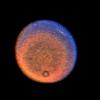
|
-
PIA00370:
-
Uranus - Discrete Cloud
Full Resolution:
TIFF
(571.1 kB)
JPEG
(38.42 kB)
|

|
1996-11-13 |
Jupiter
|
Voyager
|
VG ISS - Narrow Angle
|
850x575x3 |
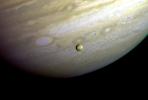
|
-
PIA00371:
-
Jupiter - Io In Front of Jupiter's Turbulent Clouds
Full Resolution:
TIFF
(797.6 kB)
JPEG
(28.95 kB)
|

|
1996-11-13 |
Jupiter
|
Voyager
|
VG ISS - Narrow Angle
|
790x900x3 |

|
-
PIA00372:
-
Jupiter - Region from the Great Red Spot to the South Pole
Full Resolution:
TIFF
(1.269 MB)
JPEG
(60.4 kB)
|

|
1998-06-08 |
Saturn
|
Voyager
|
|
860x1230x3 |

|
-
PIA00400:
-
Saturn and 4 Icy Moons in Natural Color
Full Resolution:
TIFF
(1.061 MB)
JPEG
(47.25 kB)
|

|
1996-09-13 |
Sol (our sun)
|
Voyager
|
VG ISS - Wide Angle
|
3430x2650x3 |
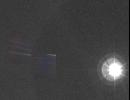
|
-
PIA00450:
-
Solar System Portrait - View of the Sun, Earth and Venus
Full Resolution:
TIFF
(8.676 MB)
JPEG
(515.8 kB)
|

|
1996-09-13 |
Sol (our sun)
|
Voyager
|
VG ISS - Wide Angle
|
4000x1200x3 |

|
-
PIA00451:
-
Solar System Portrait - 60 Frame Mosaic
Full Resolution:
TIFF
(1.124 MB)
JPEG
(166.4 kB)
|

|
1996-09-12 |
Earth
|
Voyager
|
VG ISS - Narrow Angle
|
453x614x3 |

|
-
PIA00452:
-
Solar System Portrait - Earth as 'Pale Blue Dot'
Full Resolution:
TIFF
(698 kB)
JPEG
(30.18 kB)
|

|
1996-09-13 |
Earth
|
Voyager
|
VG ISS - Narrow Angle
|
620x500x3 |
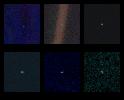
|
-
PIA00453:
-
Solar System Portrait - Views of 6 Planets
Full Resolution:
TIFF
(530.3 kB)
JPEG
(33.82 kB)
|

|
1996-09-26 |
Jupiter
|
Voyager
|
VG ISS - Narrow Angle
|
600x600x3 |
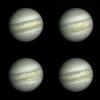
|
-
PIA00454:
-
Early Voyager 1 Images of Jupiter
Full Resolution:
TIFF
(491.5 kB)
JPEG
(21.78 kB)
|

|
1996-09-26 |
Jupiter
|
Voyager
|
VG ISS - Narrow Angle
|
500x500x3 |
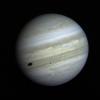
|
-
PIA00455:
-
Jupiter with Io Crossing
Full Resolution:
TIFF
(412 kB)
JPEG
(15.15 kB)
|

|
1996-09-26 |
Jupiter
|
Voyager
|
VG ISS - Narrow Angle
|
846x800x3 |
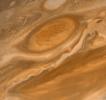
|
-
PIA00456:
-
Jupiter's Great Red Spot and South Equatorial Belt
Full Resolution:
TIFF
(1.41 MB)
JPEG
(48.12 kB)
|

|
1996-09-26 |
Jupiter
|
Voyager
|
VG ISS - Narrow Angle
|
607x496x3 |
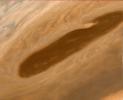
|
-
PIA00458:
-
Jupiter's North Equatorial Belt
Full Resolution:
TIFF
(748.4 kB)
JPEG
(21.62 kB)
|

|
1998-01-08 |
Neptune
|
Voyager
|
VG ISS - Narrow Angle
|
945x870x3 |
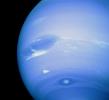
|
-
PIA01142:
-
Neptune Scooter
Full Resolution:
TIFF
(1.084 MB)
JPEG
(59.82 kB)
|

|
1998-08-28 |
Saturn
|
Voyager
|
VG ISS - Narrow Angle
|
1000x1000x3 |
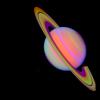
|
-
PIA01143:
-
Saturn With Rhea and Dione (false color)
Full Resolution:
TIFF
(689.2 kB)
JPEG
(41.04 kB)
|

|
1998-09-21 |
Jupiter
|
Voyager
|
ISS - Narrow Angle
|
600x992x3 |

|
-
PIA01324:
-
Jupiter
Full Resolution:
TIFF
(299.6 kB)
JPEG
(21.53 kB)
|

|
1999-01-08 |
Jupiter
|
Voyager
|
VG ISS - Narrow Angle
|
400x400x3 |
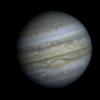
|
-
PIA01353:
-
Jupiter
Full Resolution:
TIFF
(185.9 kB)
JPEG
(9.675 kB)
|

|
1999-06-21 |
Uranus
|
Voyager
|
VG ISS - Narrow Angle
|
512x512x1 |
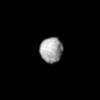
|
-
PIA01357:
-
Uranus Moon - 1985U1
Full Resolution:
TIFF
(17.25 kB)
JPEG
(4.796 kB)
|

|
1998-12-05 |
Uranus
|
Voyager
|
VG ISS - Narrow Angle
|
1567x929x3 |
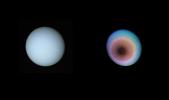
|
-
PIA01360:
-
Uranus, Toward the Planet's Pole of Rotation
Full Resolution:
TIFF
(640.1 kB)
JPEG
(39.86 kB)
|

|
1999-10-14 |
Neptune
|
Voyager
|
VG ISS - Narrow Angle
|
800x500x1 |
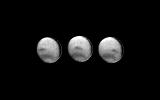
|
-
PIA01363:
-
3 Images of Neptune
Full Resolution:
TIFF
(38.53 kB)
JPEG
(11.75 kB)
|

|
1998-12-05 |
Saturn
|
Voyager
|
VG ISS - Narrow Angle
|
1200x1500x3 |

|
-
PIA01364:
-
Saturn Taken from Voyager 2
Full Resolution:
TIFF
(2.209 MB)
JPEG
(61.29 kB)
|

|
1998-12-05 |
Saturn
|
Voyager
|
VG ISS - Narrow Angle
|
645x733x3 |

|
-
PIA01365:
-
Saturn's Northern Hemisphere
Full Resolution:
TIFF
(734.6 kB)
JPEG
(60.08 kB)
|

|
1998-12-05 |
Jupiter
|
Voyager
|
VG ISS - Narrow Angle
|
916x901x3 |
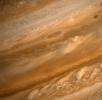
|
-
PIA01369:
-
Jupiter from Voyager 2
Full Resolution:
TIFF
(1.809 MB)
JPEG
(68.65 kB)
|

|
1998-12-05 |
Jupiter
|
Voyager
|
VG ISS - Narrow Angle
|
800x920x3 |

|
-
PIA01370:
-
Jupiter's Great Red Spot
Full Resolution:
TIFF
(1.251 MB)
JPEG
(49.61 kB)
|

|
1998-11-04 |
Jupiter
|
Voyager
|
VG ISS - Narrow Angle
|
400x400x3 |
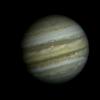
|
-
PIA01371:
-
Voyager Picture of Jupiter
Full Resolution:
TIFF
(152.4 kB)
JPEG
(8.968 kB)
|

|
1998-12-05 |
Saturn
|
Voyager
|
VG ISS - Narrow Angle
|
1910x914x1 |
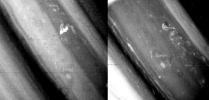
|
-
PIA01375:
-
Saturn's North Temperate Region
Full Resolution:
TIFF
(665 kB)
JPEG
(207.1 kB)
|

|
1998-11-13 |
Saturn
|
Voyager
|
VG ISS - Narrow Angle
|
900x899x1 |
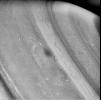
|
-
PIA01376:
-
Voyager 2 Image of Saturn
Full Resolution:
TIFF
(611.5 kB)
JPEG
(183.8 kB)
|

|
1998-11-13 |
Saturn
|
Voyager
|
VG ISS - Narrow Angle
|
850x1054x1 |

|
-
PIA01377:
-
Photographic Mosaic of Saturn
Full Resolution:
TIFF
(356.2 kB)
JPEG
(313.9 kB)
|

|
1998-11-13 |
Saturn
|
Voyager
|
VG ISS - Narrow Angle
|
900x900x1 |
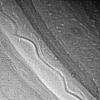
|
-
PIA01378:
-
Saturn's Ribbonlike Cloud Structure
Full Resolution:
TIFF
(345.7 kB)
JPEG
(227.4 kB)
|

|
1998-11-17 |
Saturn
|
Voyager
|
VG ISS - Wide Angle
|
404x665x3 |

|
-
PIA01379:
-
Saturnian Atmospheric Storm
Full Resolution:
TIFF
(609.9 kB)
JPEG
(18.68 kB)
|

|
1998-12-05 |
Saturn
|
Voyager
|
VG ISS - Narrow Angle
|
1500x2000x3 |

|
-
PIA01383:
-
Saturn and its Satellites Tethys, Enceladus and Mimas
Full Resolution:
TIFF
(2.122 MB)
JPEG
(94.75 kB)
|

|
1998-12-05 |
Jupiter
|
Voyager
|
VG ISS - Narrow Angle
|
5489x4637x3 |
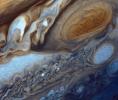
|
-
PIA01384:
-
Jupiter's Great Red Spot
Full Resolution:
TIFF
(76.36 MB)
JPEG
(3.275 MB)
|

|
1999-01-08 |
Uranus
|
Voyager
|
VG ISS - Narrow Angle
|
1000x1000x3 |
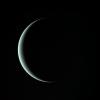
|
-
PIA01391:
-
Uranus
Full Resolution:
TIFF
(961 kB)
JPEG
(24.45 kB)
|

|
1998-10-30 |
Earth
|
Voyager
|
VG Imaging Science Subsystem
|
2012x2994x3 |

|
-
PIA01480:
-
Voyager 2 Launch
Full Resolution:
TIFF
(17.25 MB)
JPEG
(444 kB)
|

|
1998-10-30 |
Jupiter
|
Voyager
|
|
2081x1654x3 |
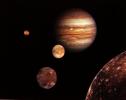
|
-
PIA01481:
-
Jupiter System Montage
Full Resolution:
TIFF
(4.652 MB)
JPEG
(148.9 kB)
|

|
1998-10-30 |
Saturn
|
Voyager
|
|
2351x2015x3 |
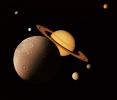
|
-
PIA01482:
-
Saturn System Montage
Full Resolution:
TIFF
(6.822 MB)
JPEG
(194.2 kB)
|

|
1998-10-30 |
Saturn
|
Voyager
|
|
2674x2075x3 |
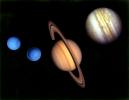
|
-
PIA01483:
-
Voyager Tour Montage
Full Resolution:
TIFF
(4.614 MB)
JPEG
(330.6 kB)
|

|
1998-11-02 |
Uranus
|
Voyager
|
|
2118x2618x3 |

|
-
PIA01488:
-
Uranus' Upper Atmosphere
Full Resolution:
TIFF
(8.538 MB)
JPEG
(396.2 kB)
|

|
1998-10-30 |
Uranus
|
Voyager
|
|
954x962x3 |
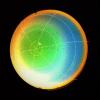
|
-
PIA01489:
-
Uranus' Atmosphere
Full Resolution:
TIFF
(2.298 MB)
JPEG
(94.54 kB)
|

|
1998-10-30 |
Neptune
|
Voyager
|
|
2073x2678x3 |

|
-
PIA01491:
-
Neptune and Triton
Full Resolution:
TIFF
(3.424 MB)
JPEG
(287.1 kB)
|

|
1998-10-30 |
Neptune
|
Voyager
|
|
2188x2185x3 |
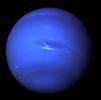
|
-
PIA01492:
-
Neptune Full Disk View
Full Resolution:
TIFF
(8.758 MB)
JPEG
(259 kB)
|

 Planetary Data System
Planetary Data System


















































































































